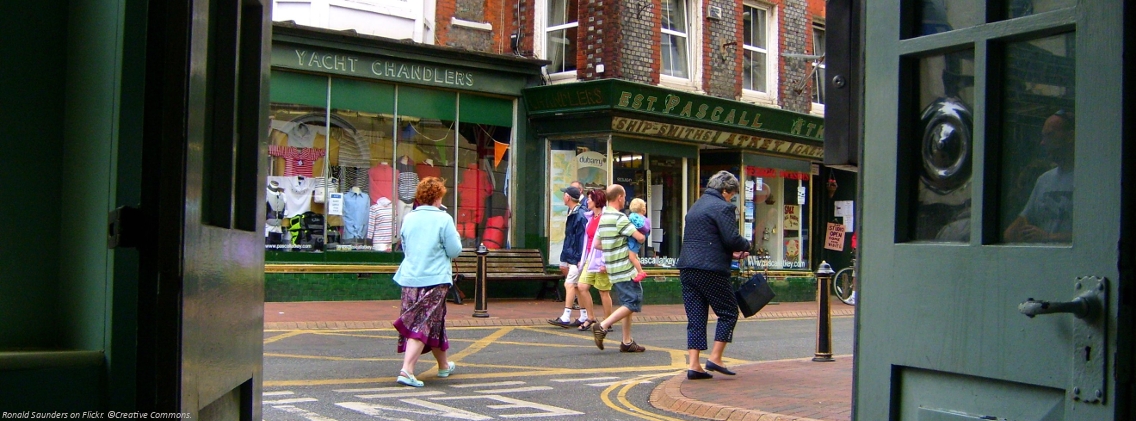Saugatuck Congregational Church, UCC
© Rev. Alison J. B. Patton
January 15, 2017
Before the internet, before we had leather-bound Bibles, before the printing press was even invented, we relied on word of mouth. And that’s how the story spread – this story at turns compelling and baffling, about a man born in a barn at the turn of the first century who was shaped by the full range of human experiences – from the tender touch of a mother to the pleasure of wine on the tongue and salt spray on the face; from the simple rapture of breaking bread with friends; to the hollowed out feelings of betrayal and grief. Person to person to person, this story was spread about one who was completely human and yet also somehow fully divine.
The shepherds told their version of the story: “You’ll never believe it: but there were angels – the entire night sky erupted with them; their voices rang out in a million-part harmony: ‘Come and see!’ they sang. So we did, and there was a baby, and we saw eternity shining in his eyes.”
The magi told their version of the story: “We knew it, even though we lived a world away: that God was up to something new. We felt the persistent tug at the edges of our soul, were drawn by the urging of a star that twinkled out its message like ancient Morse Code: ‘Come and see!’ So we did; we found the baby. The same star we’d seen twinkling in the sky twinkled at the corner of his eye[1] and we knew our lives would never be the same…”
Thirty years later in the life of that child, a man known as John the Baptist told HIS version of the story, how the chilly waters of the River Jordan had beckoned to him, “Come and see.” So he’d waded in, summoned others to join him in washing away the failures of the past and waited for the one whom God had promised. When that one arrived, John knew it by the way the sky transformed: a dove descending this time, instead of angels, but he knew what it meant. “I myself have seen and have testified that this is the Son of God.”
John kept telling the story to the curious and the newly committed, until Jesus showed up in person again. “There he is!” John said, with such conviction that his disciples realized it was time for them to get their own version of the story to tell, so they dropped what they were doing and followed after Jesus. “What are you looking for?” Jesus asked. Unsure how to answer, they changed the subject: “Where are you staying?”
He said, “Come and see.” So they did, and what they witnessed changed them for good.
It’s the way most every story begins: “Come and see,” because we are human, and we experience the world through our skin. We need to see and hear, taste and feel before we can tell.
Maybe that’s why God showed up in the first place: because She realized that the only way to really know these beloved, stiff-necked, curious creatures of Her own making was to get inside a human skin. It’s a unique claim, in all of religion: that God became human. Moses, Muhammad, the Buddha, these were all prophets, servants of the Holy One called to illuminate the way. But Jesus, Jesus is described in the Gospel of John as the “Word [who] became flesh and lived among us.” (John 1:14)
Every religion has its insights, its own way of approaching the Divine; and should be respected; I suspect each one has something to teach us. But this distinctly Christian claim fills me with awe: that God wanted to get under our skin, wanted to know what it’s like – to get blisters from walking all day; to burn your tongue on a mouthful of fried fish; to feel the tenderness of a human caress and the sharp pain of nails piercing flesh.
That’s the Christian claim: That God sought out those intensely human experiences. And that’s the Epiphany story. Epiphany, which refers to something revealed, God made tangible. As in: “John had an epiphany.” During this season between Christmas and Lent, we hear from those who testify that God showed up in person, in the form of Jesus Christ.
So which is harder to believe: that God would choose to become human, or that Jesus was somehow divine? Or are the two equally confounding claims? To our 21st century, postmodern minds, the whole thing may sound a bit outrageous – the stuff of superstition, long since superseded by science. “Of course, Jesus was a model human, the best kind of man, a voice for love and justice, but divine…? Only God is divine…” We wrestled with this concept in Bible Study on Wednesday. How could Jesus be human and also God, both Father and Son? It’s the kind of brainteaser that has bewildered theologians for millennia, and no doubt will continue to do so.
As for me, I side with the poets, whose turns of phrase (like “Word made flesh”) help me to imagine the otherwise unimaginable, draw me closer to the Holy Mystery than I can get with mere logic. I side with the story tellers, who know that the Truth of a story is more about the way it stirs and stretches our hearts, than in it is about mere fact. So I ask not, ‘How does that work?’ But rather, ‘What does it mean?’ I am compelled by the suggestion that God became flesh because it means that bodies matter, and that God is deeply concerned with human pleasure and with human pain.
And I am intrigued by the story tellers’ promise that we can experience God through our senses, if only we take the time to look, listen, touch, taste, smell – that we, like the shepherds, the magi, John the Baptist, the disciples, can perceive the mystery of God-made-flesh in the world around us, in the wail of an infant and the flash of a stranger’s smile; in songs of freedom, appeals for justice and acts of mercy. Again and again, I hear Jesus’ words addressed not just to those ancient narrators, but also to us, two thousand years later: “Come and see.”
Not: “Let me explain,” or, “Read these cliff notes,” but: “Come and see.” Jesus knew that we experience the world through our skin. More often than not, the truth of the matter works its way into our hearts through our retinas, our eardrums, our fingertips and our nostrils. Really, that’s what revelation is: it’s a first-person encounter with God. I don’t believe that the Spirit of God is at work because someone insisted that it was so; I believe it because I’ve seen that spark of God – in a crowded house church in Cuba; and in an AA meeting down the hall… I’ve walked among the basil plants and chili peppers raised by kids in a community garden in Hartford – and it smelled divine.
I’ve heard the voice of God in the harmonies of black, brown and white folk singing about the sacred work that binds us together; and in the deep, hard, necessary conversations we have about the vagaries of racism. I have witnessed God embodied in those encounters, in the shoulders of one who leans in to listen; in the tears of one who confesses failure; in the wide open arms of one who forgives.
“Come and see what God is up to. [Jesus said.] What gives God joy; what breaks God’s heart; what stirs God to action. Take a good look. And see whether what you witness doesn’t change you for good.”
Thousands of people heard that summons after Bloody Sunday in March of 1965, when a young minister named Rev. Martin Luther King, Jr. made a national appeal to people of every race and faith: “Come and see what’s happening in Selma,” he said. Throngs of people went, to witness firsthand Courage-in-the-flesh; to participate in an embodied act of Love: to lock elbows, march across the bridge and face down the billy clubs that had beaten and bruised countless bodies just two days before. Together they stood at the edge of the bridge on that Tuesday after and watched as the guns were lowered and the street was cleared. Together they prayed. Surely, none of them was ever the same.
Thousands more heard that summons this month, when a handful of women invited sisters and brothers from around the country to gather in Washington DC for a National Women’s March. “Come and see,” they said. “Come and see what’s possible, when we get together, when we lift our voices and share our truth. Come and see what we can achieve for the wellbeing of all women, all people.” I am going on January 22nd because I feel a tug at the corners of my soul; because I want to hear my sisters’ stories of hope and suffering and because I believe that those stories matter to God. Indeed, I believe that God will be there in the flesh, that this is one more chance to meet the one who is always calling us out on a journey, always calling us to learn by walking; and to love by listening.
So what about you? What about us? The question, I suspect, is not whether we are being called, this Epiphany season, but where. The truth is, Jesus is always inviting us to go somewhere: across a room, across the aisle, across a bridge, across a border…After all: there is so much to see, so much God would show us about the ways He is hard at work, defending human bodies, healing human spirits, transforming human suffering… if only we would look, if only we would drop what we’re doing and follow after.
There are so many ways that God is prepared to touch us, teach us, transform us through the people we have not yet met, places we have not yet been, and encounters with the Holy that we have not yet had… until every one of us has our own version of the story to tell.
So this season, Beloved in Christ: keep your eyes peeled. Keep your ears open. Keep your fingertips extended. And when it reaches you, spread the word: God has arrived, and surely we and the whole world will be changed for good!
Thanks be to God.
Amen.
[1][1] Image of a star that shone in the baby’s eye, courtesy of Barbara Brown Taylor, “Home by Another Way,” in Home By Another Way (Boston: Cowley Publications, 1999), p. 30.


